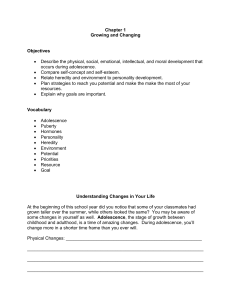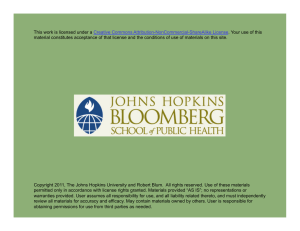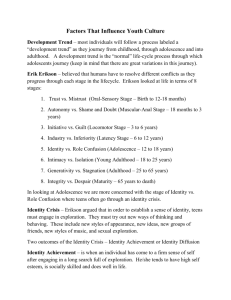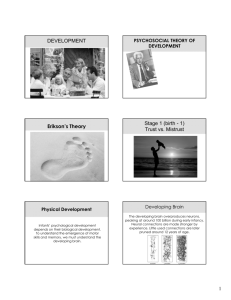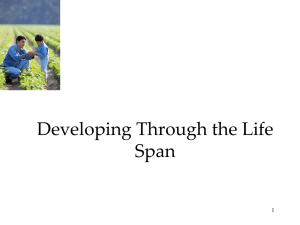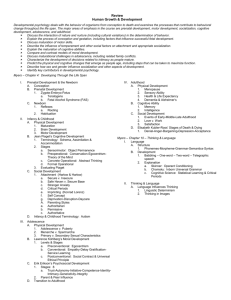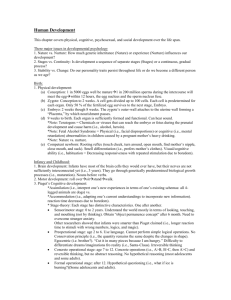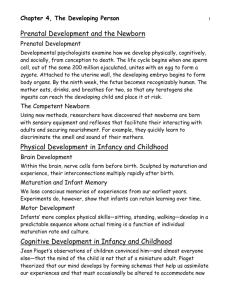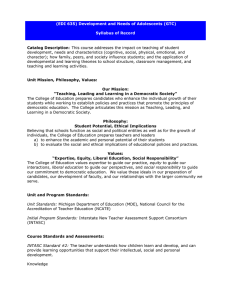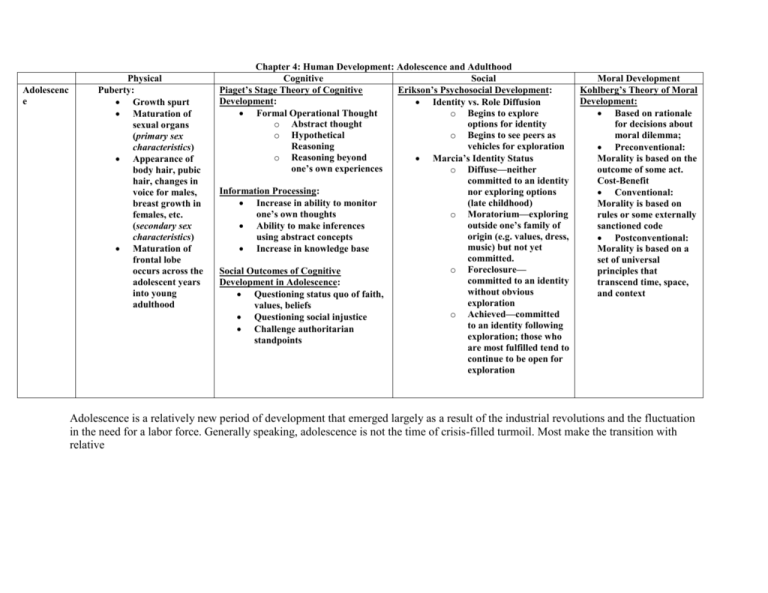
Adolescenc
e
Physical
Puberty:
Growth spurt
Maturation of
sexual organs
(primary sex
characteristics)
Appearance of
body hair, pubic
hair, changes in
voice for males,
breast growth in
females, etc.
(secondary sex
characteristics)
Maturation of
frontal lobe
occurs across the
adolescent years
into young
adulthood
Chapter 4: Human Development: Adolescence and Adulthood
Cognitive
Social
Piaget’s Stage Theory of Cognitive
Erikson’s Psychosocial Development:
Development:
Identity vs. Role Diffusion
Formal Operational Thought
o Begins to explore
o Abstract thought
options for identity
o Hypothetical
o Begins to see peers as
Reasoning
vehicles for exploration
o Reasoning beyond
Marcia’s Identity Status
one’s own experiences
o Diffuse—neither
committed to an identity
Information Processing:
nor exploring options
Increase in ability to monitor
(late childhood)
one’s own thoughts
o Moratorium—exploring
outside one’s family of
Ability to make inferences
origin (e.g. values, dress,
using abstract concepts
music) but not yet
Increase in knowledge base
committed.
o Foreclosure—
Social Outcomes of Cognitive
committed to an identity
Development in Adolescence:
without obvious
Questioning status quo of faith,
exploration
values, beliefs
o Achieved—committed
Questioning social injustice
to an identity following
Challenge authoritarian
exploration; those who
standpoints
are most fulfilled tend to
continue to be open for
exploration
Moral Development
Kohlberg’s Theory of Moral
Development:
Based on rationale
for decisions about
moral dilemma;
Preconventional:
Morality is based on the
outcome of some act.
Cost-Benefit
Conventional:
Morality is based on
rules or some externally
sanctioned code
Postconventional:
Morality is based on a
set of universal
principles that
transcend time, space,
and context
Adolescence is a relatively new period of development that emerged largely as a result of the industrial revolutions and the fluctuation
in the need for a labor force. Generally speaking, adolescence is not the time of crisis-filled turmoil. Most make the transition with
relative

